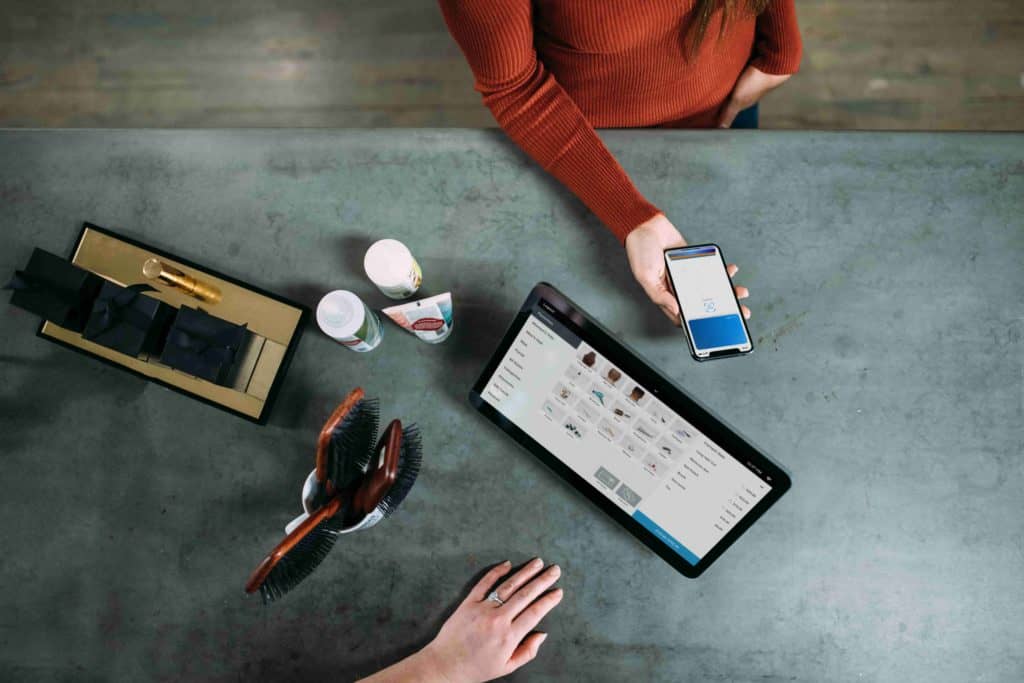
Internet of Things is one of the top buzzwords nowadays with not as much hype as artificial intelligence or blockchain but we will see an increase in their popularity and applications thanks to the implementation of 5G technology and Smart-Home hubs like Amazon Alexa, Apple HomePod or Google Home. Besides, the industrial market for IoT (IIoT) is projected to worth $263.4 billion by 2027 according to analysts. That’s why I think it’s important to discuss about some misunderstandings about the technology
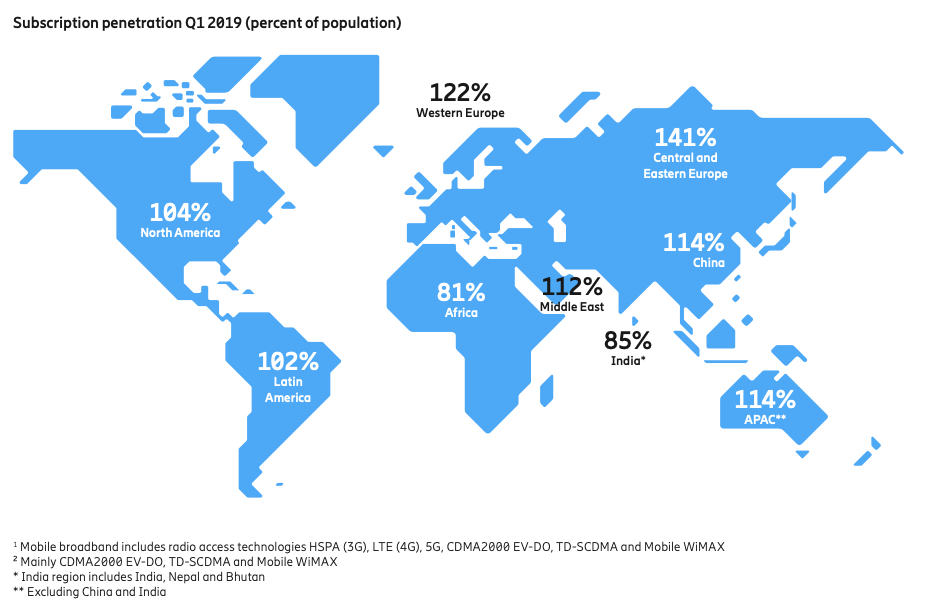
What’s really IoT
Besides the technology stack what clearly defines an IoT application is how it’s used. A common implementation should be able to do four things:
- Sense information from its environment
- Share the information with a remote node
- Process the information.
- Take an action based on the previous steps.
Some people think that IoT obligatorily requires Internet connectivity and that there is a global network for it. But the reality is that IoT applications connect devices in networks of all sizes. Actually, there are many business and organizations that have private IoT networks.
The issue is that many experts refer to all of these networks as IoT, which creates a huge category including a growing number of devices and applications, from consumer products ( fitness trackers) to industrial equipment (assembly robots). We can take as an example what Sarah Cooper, an expert in AWS IoT said this year
“I believe IoT will disappear as a term. The Internet of Things is really a snapshot in time because fundamentally everything will be connected”
Benefits & limitations
Most business use IoT to streamline complex processes, detect problems early and energy efficiency. Nevertheless, there are limitations related to their implementation:
- Because of the diversity of manufacturers and standards many IoT devices are incompatible with each other.
- IoT devices are vulnerable to cyberattacks given their designs doesn’t consider security stacks.
- The cost-benefit of the solutions are more bearable for large companies more than for small ones.
- Electricity restricts where it is possible to use IoT devices and how.
Sensing the data it’s pretty straightforward and you can use an Arduino board and add the necessary sensors or design, customize and fabricate one specific board for your application. For this case, Particle offers excellent development kits and ready to implement sensors which can help you to implement IoT. Furthermore, they can offer you the necessary connectivity but I’ll talk more about that later.
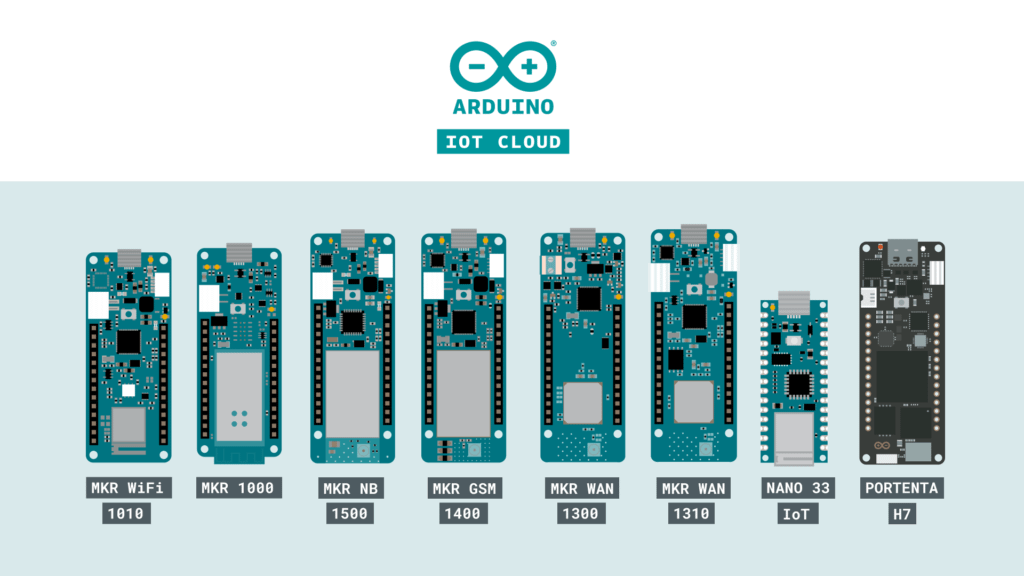
Networks available for IoT
It’s true that 5G will enable new time-critical communication applications like autonomous vehicles, cloud assisted AR, real time industrial control or cloud gaming but actually we’ve had a predecessor technology called M2M with a similar architecture that we’ve been using for years. Furthermore, many IoT applications may not require low latency or high bandwidth because of its not critical nature.
According to Ericsson Mobility Report of November 2020, most of the IoT applications are using legacy 2G or 3G technologies. So we can expect that many companies will use these telecommunication bands to implement their IoT application. Actually, the benefit about it will be its range and that the sensors are considerable cheaper (because of M2M).
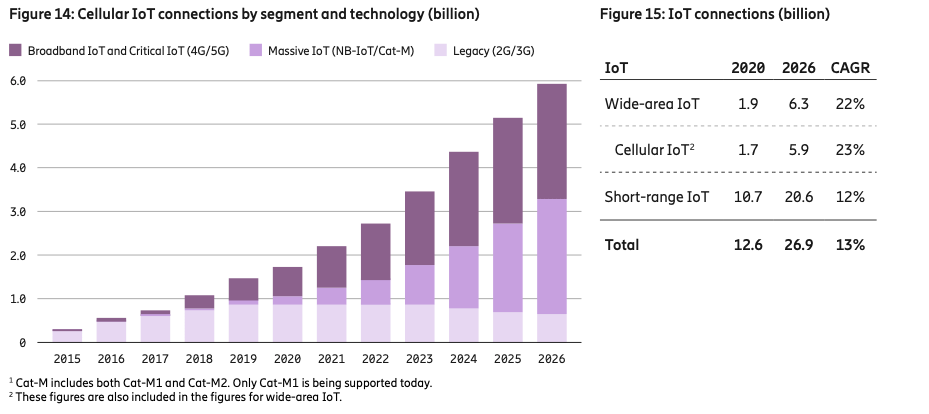
f we plan to use cellular networks for our IoT application we need to use a specific SIM cards. So most of telecommunication operators worldwide will he happy to sell you their own chip with a commitment to use their network. Thus, that’s where it comes handy to look for services like Twiliothat let you order and register a Programmable Wireless SIM independent from Operators or Particle that shows a list of the compatibility of its devices worldwide. The great thing about both companies is that they offer frameworks to build applications easily.
There are other technologies like Bluetooth, LoRaWAN or Wifi that can help you to implement local coverage for your IoT sensors but later you’ll need a proxy or gateway to send the information for processing.
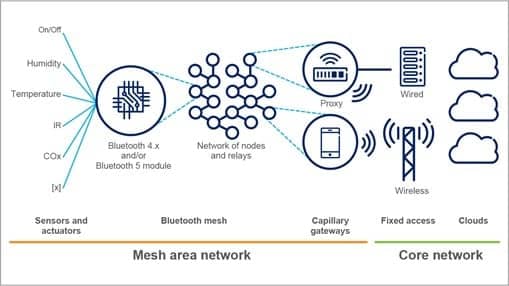
The main goal is to simplify the configuration and deployment of new sensors. Actually, Amazon Alexa has a very elegant solution in which you can create devices that are fully compatible and don’t need major configuration. They launched it last year in AWS re:Invent as Alexa Connect Kit. The only commitment is to use Alexa as the hub or proxy.
In the future we may see new networks compatible with IoT sensors or distributed communications but one of the most promising could be SpaceX’s Starlink that will provide connectivity using satellite networks. It will be interesting to see how they could manage the latency in the communication (the time for the data to go to the space and came back).
Processing the data
Once data is collected by the IoT sensor it’s send to a remote (client) station to process it and then make a decision or to take an action. Nowadays the processing can be made via traditional software or artificial intelligence.
Also, now the three major cloud providers (AWS, Microsoft and Google) have tools to easily implement networks and manage the sensors on field.
For example, Amazon Web Services have many references architectures that can be deployed automatically with AWS CloudFormation facilitating the implementation of solutions. Under its portfolio you have a wide range or products depending on the specific need:
- Device Software (FreeRTOS, AWS IoT Greengrass)
- Connectivity and Control (AWS IoT Core, Device Defender, Device Management)
- Analytics (AWS IoT Analytics, IoT Events, IoT Things Graph)
Below I show a reference architecture to Build a Visualization and Monitoring Dashboard for IoT Data with Amazon Kinesis Analytics and Amazon QuickSight.
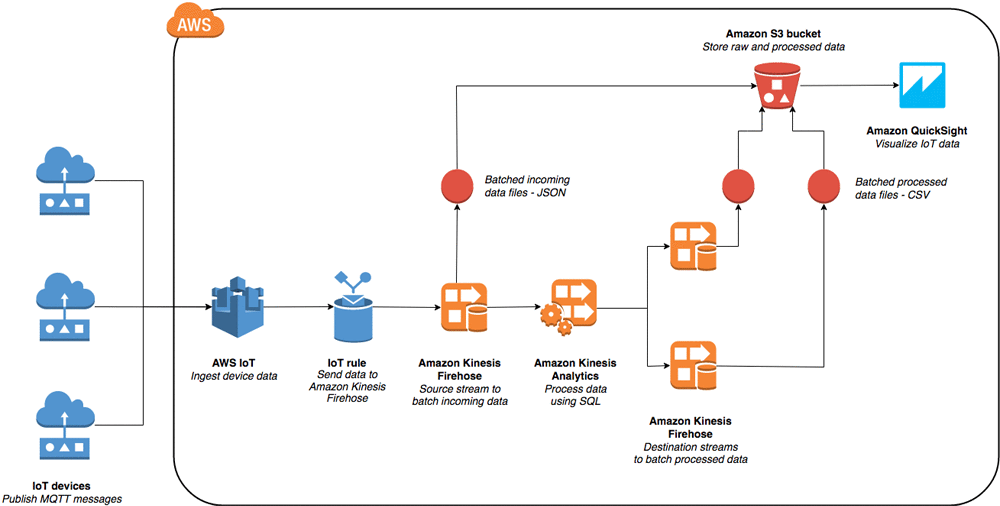
Similarly, Google Cloud has its own offering for IoT solutions. Its named Cloud IoT Core and can be easily integrated with other services as Big Query and Machine Learning to develop powerful applications. Besides, one interesting differentiator is they offer a list of compatible IoT Developer Prototyping Kits and IoT Edge Devices.
https://cloud.google.com/solutions/iot/kit
Also, I show you below a reference architecture of an end-to-end IoT solution on Google Cloud Platform. This one simulates a collection of sensors, distributed across the globe, measuring city temperatures and implementing a dashboard so it will be possible to monitor city temperatures in real time and perform analysis to extract insights.
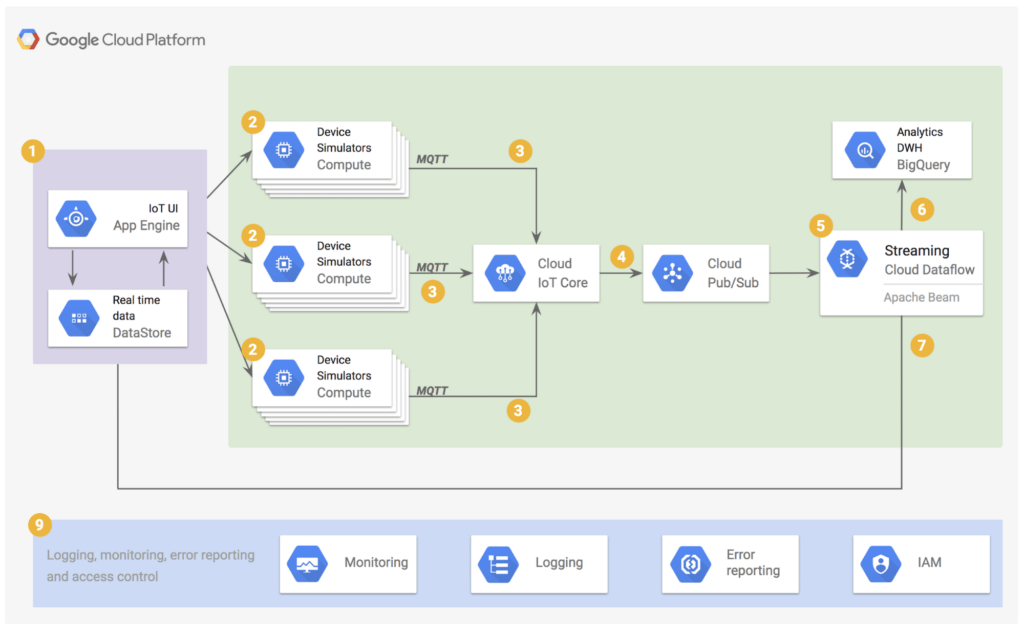
Finally, Microsoft offering in Azure for IoT it’s called IoT Central. The nice thing about it is that defines application templates that can help you to easily implement solutions in their cloud. Also, it easily integrates with all the services in their platform.
Microsoft offers a base reference architecture for its offering, showing the potential to connect different services to get insights from the data provided by the IoT devices on field.
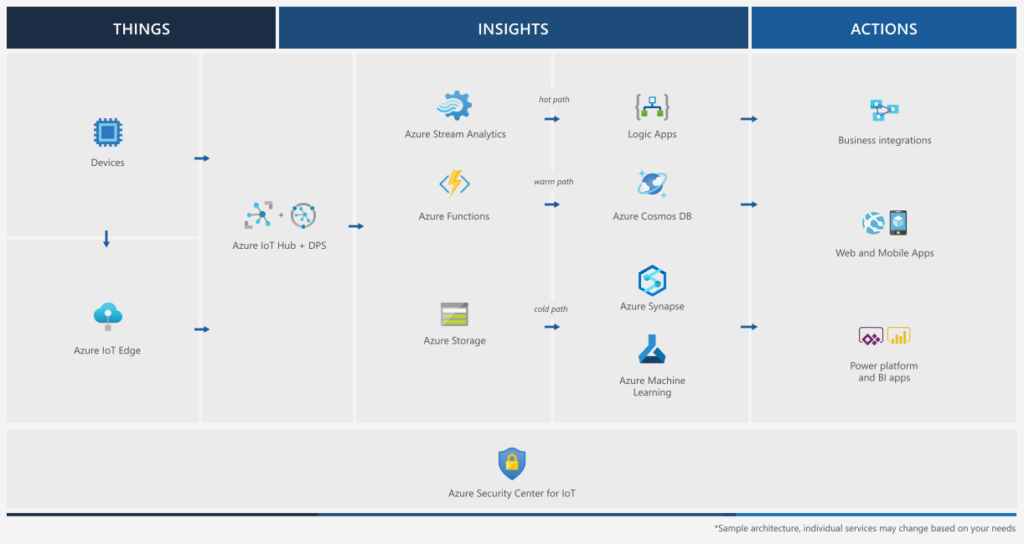
The great thing about cloud services it’s how easy is to implement and connect solutions. The dark side will be moving to another service or integrating third-party protocol or devices. Furthermore, you should consider pricing methods before you commit with any of the cloud providers.
Final Misconceptions.
Finally, there are some misunderstandings about the technology that I want to summarize:
- Not every internet-connected device is part of the IoT, and not every IoT device connects to the internet.
- IoT devices are not plug and play (besides recent efforts to facilitate the implementation) and we need require prior planning for design and engineering of a solution particularly for industrial applications.
- A future “improved IoT” won’t standardize all the communication protocols because different methods offer different benefits so the variety is likely to stay.
- IoT won’t be only for consumer products given that industrial applications has been for a long time (even when the solutions were called M2M)
- Hardware is not the only challenge for an IoT solution. A bad definition of the main goal or problem to be solved in conjunction with a poor data structure and management will affect the outcome of your implementation. Furthermore, bad analysis of the data won’t help you to take insightful and informed decisions for improvement.
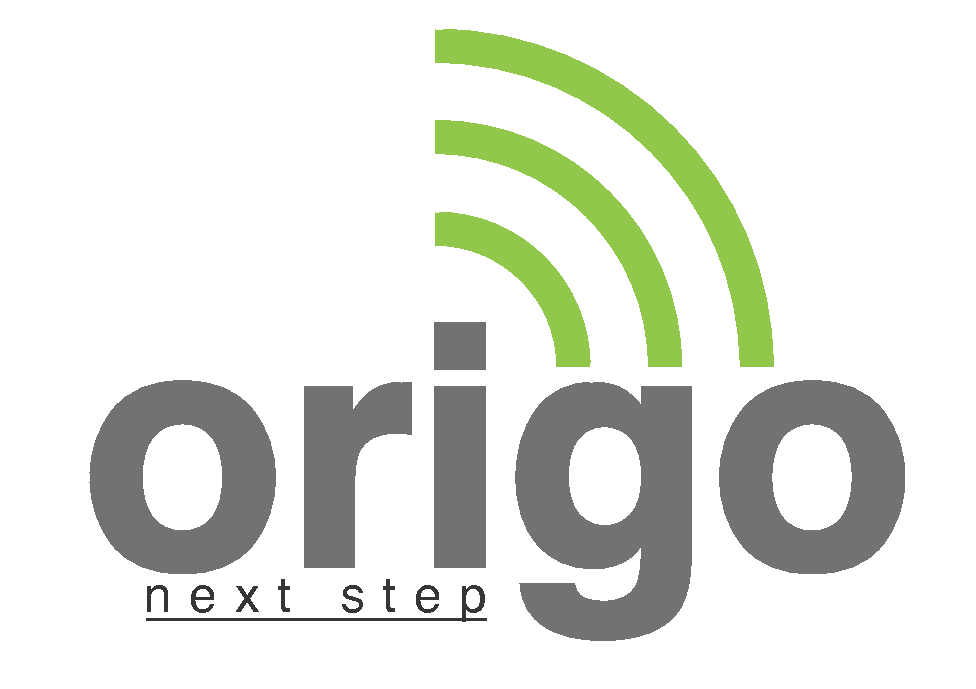
We can help you to design and implement IoT solutions.